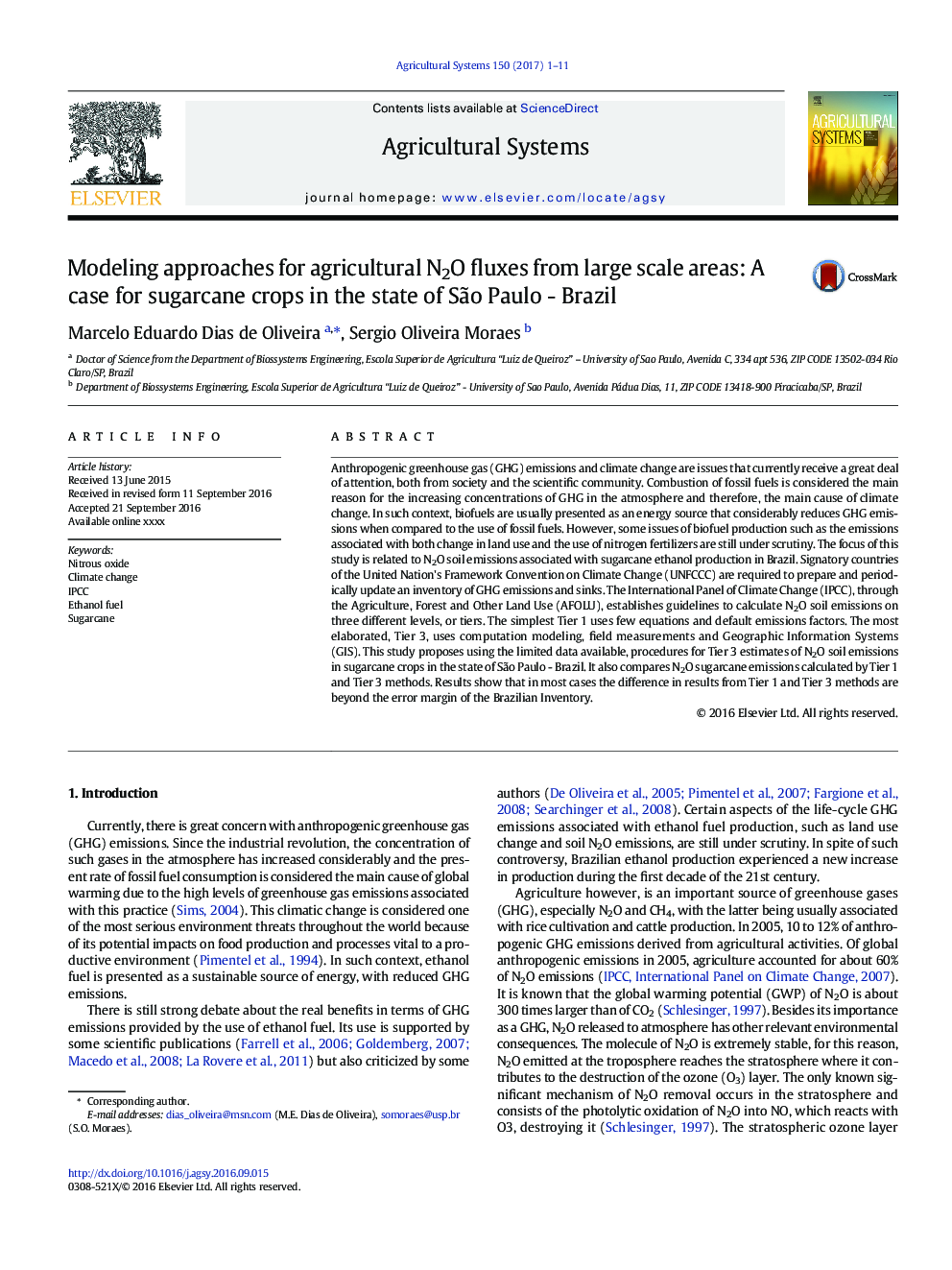| کد مقاله | کد نشریه | سال انتشار | مقاله انگلیسی | نسخه تمام متن |
|---|---|---|---|---|
| 4491101 | 1623220 | 2017 | 11 صفحه PDF | دانلود رایگان |
• We developed a framework for “Tier 3” estimates of N2O soil sugarcane soil emissions in the state of São Paulo – Brazil.
• We provided a framework for future development of “Tier 3” inventories for N2O agricultural emissions in Brazil.
• We compared this approach to IPCC's “Tier 1” approach.
• We used three different spatial resolutions to estimate N2O soil emissions.
• We found that results from “Tier1” and “Tier 3” methodologies differ significantly.
Anthropogenic greenhouse gas (GHG) emissions and climate change are issues that currently receive a great deal of attention, both from society and the scientific community. Combustion of fossil fuels is considered the main reason for the increasing concentrations of GHG in the atmosphere and therefore, the main cause of climate change. In such context, biofuels are usually presented as an energy source that considerably reduces GHG emissions when compared to the use of fossil fuels. However, some issues of biofuel production such as the emissions associated with both change in land use and the use of nitrogen fertilizers are still under scrutiny. The focus of this study is related to N2O soil emissions associated with sugarcane ethanol production in Brazil. Signatory countries of the United Nation's Framework Convention on Climate Change (UNFCCC) are required to prepare and periodically update an inventory of GHG emissions and sinks. The International Panel of Climate Change (IPCC), through the Agriculture, Forest and Other Land Use (AFOLU), establishes guidelines to calculate N2O soil emissions on three different levels, or tiers. The simplest Tier 1 uses few equations and default emissions factors. The most elaborated, Tier 3, uses computation modeling, field measurements and Geographic Information Systems (GIS). This study proposes using the limited data available, procedures for Tier 3 estimates of N2O soil emissions in sugarcane crops in the state of São Paulo - Brazil. It also compares N2O sugarcane emissions calculated by Tier 1 and Tier 3 methods. Results show that in most cases the difference in results from Tier 1 and Tier 3 methods are beyond the error margin of the Brazilian Inventory.
Journal: Agricultural Systems - Volume 150, January 2017, Pages 1–11
